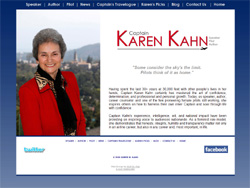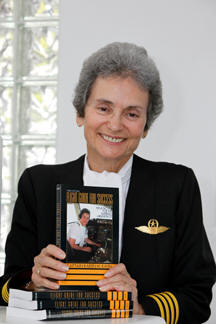“You never can have too much fuel, unless you are on fire.” That’s what pilots jokingly tell each other until they realize that there’s a point at which having more fuel goes from being a good thing to being a big problem.
Returning to
my Boeing 757-300 in Las Vegas one day
after checking our flight plan for the return trip to Houston, I was
approached by a terrified fueler who confessed to me that he had confused my
airplane with the one parked at the gate next door which was headed for Newark,
NY. Horrified at having put almost 3
extra hours of fuel in my plane, he explained that the flight to Newark always
parked at this gate and it was his mistake in not reading carefully the ship
number painted on the nose gear door before he started to fuel the airplane to
be sure he had the correct airplane.
Now
it would be a critical issue as to whether we could make the flight without
having to defuel the airplane since we had both a maximum takeoff weight
(which was no problem on this relatively short flight), but more importantly, a maximum
landing weight concern.
You might
think that fueling an airliner for an upcoming flight is akin to refueling your
car but precise fuel planning and then verifying that the airplane has the fuel
on board (FOB) which you requested is another crucial concern and is definitely
at the top of every pilot’s critical preflight list.
When considering fuel for a flight, pilots thoughts range from do I
have enough fuel, to will I have to fight with the dispatcher (sitting in his
comfy office many miles away) for extra fuel, to am I Iegal to begin or continue
the flight, to do they have enough time to get me all the fuel I will need, to
will the airplane actually be heavier than planned and burn more than the
forecast fuel or possibly need to land overweight (which will require a
time-consuming inspection at the destination)? All these issues influence how
much fuel is actually boarded for any particular flight. In this case, the key
word was one small digit. The fueler had put the fuel load for ship 868 on ship
861 and created a real problem.
Landing
overweight has many ramifications, not the least of which are required
inspections, decreased tire and landing gear life as well as expensive schedule delays for all involved. We did
fly that flight with the fuel load as wrongly boarded, spending the full flight
time carefully calculating how to burn up as much fuel as possible in order not
to land overweight. We had to decline any short cuts or expeditious vectors
that ATC kindly offered us, explaining that we may have been in the fuel-saving
mode yesterday, but today it was a case of needing to burn the excess before
reaching Houston to prevent a possible overweight landing.
Having had a
career filled mostly with the opposite problem (not enough fuel on board,
rather than too much), it was eye-opening to see how the reverse problem could
also consume much of one’s focus on what should have been a routine flight.






No comments:
Post a Comment